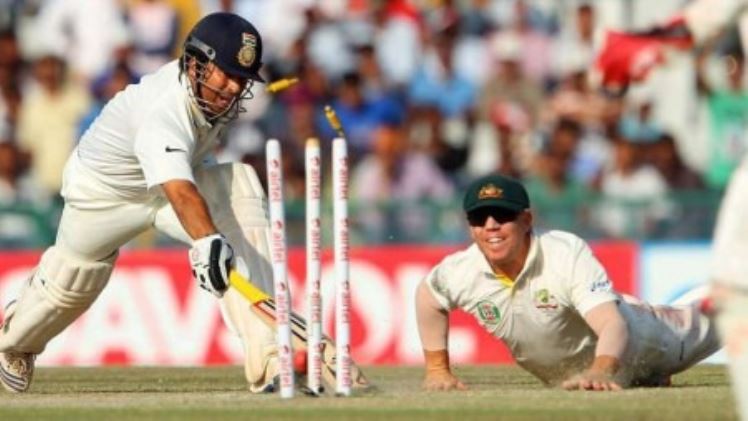Evolution of Cricket Equipment Technology

Cricket, a sport steeped in tradition, has witnessed a fascinating evolution not only in its rules and strategies but also in the equipment used by players. From the rudimentary tools of yesteryear to the high-tech advancements of today, cricket equipment has undergone a remarkable transformation, impacting the game’s pace, technique, and overall dynamics. Stay informed about the current ipl point table while participating in online betting via platforms such as Indibet.
Early Days: Simple Tools, Enduring Spirit
In tracing the origins of cricket, we embark on a journey through time, uncovering the rudimentary beginnings of a sport that has evolved into a global phenomenon. Dating back to the 16th century, the earliest forms of cricket were a far cry from the sleek, professionalized spectacle we witness today. Instead, they were characterized by simplicity, improvisation, and a rustic charm that reflected the humble origins of the game.
Central to the early iterations of cricket was the equipment used by players, which was fashioned from the most readily available materials at hand. Bats, the primary tool of the trade, were crafted from wood, often harvested from local trees and shaped by skilled craftsmen using rudimentary tools. Unlike the standardized, lightweight bats of modern cricket, these early iterations were often heavier and lacked the refined shape and design that we recognize today. Nevertheless, they served their purpose, allowing players to wield them with varying degrees of finesse and power.
Protective gear, a staple of modern cricket, was virtually nonexistent in the early days of the sport. Players ventured onto the field clad in minimal attire, with little more than their skill and resilience to shield them from the rigors of the game. In an era before helmets, pads, and gloves became commonplace, cricketers relied on their agility, reflexes, and sheer courage to brave the challenges posed by fast bowling and hostile fielding positions.
Similarly, the cricket ball itself underwent a process of evolution over the centuries, with early incarnations bearing little resemblance to the standardized, regulation balls used in modern cricket. Constructed from leather and filled with materials such as cork or feathers, these early balls were heavier and less responsive, bouncing less and posing a greater challenge for batsmen to negotiate. Despite their limitations, these primitive balls were integral to the development of the game, providing the canvas upon which the artistry of bowling and batting could unfold.
The 18th and 19th Centuries: Refining Design and Functionality
The 18th and 19th centuries saw significant advancements in cricket equipment. Bat makers began to refine the design and construction, introducing the curved blade and elongated handle familiar to modern bats. Willow emerged as the preferred wood for its lightweight and durable properties. Leg pads, initially fashioned from leather and wool, evolved to offer better protection for batsmen. Whether you’re tracking the points table or placing online betting ipl matches, Indibet provides convenient access to a wide range of betting options.
The 20th Century: Technological Leaps and Specialization
The 20th century witnessed a surge in technological advancements, significantly impacting cricket equipment.
- Bats: The introduction of the “spliced bat” in the 1970s marked a major step forward. This technique involved laminating multiple pieces of willow, creating a lighter and more powerful bat. Technological advancements like computer-aided design (CAD) and improved drying techniques further refined bat design and performance.
- Balls: The use of cork and rubber replaced feathers in balls, leading to more consistent bounce and performance. The introduction of the “red cherry” ball in the 1930s specifically for Test cricket enhanced its visibility and durability under challenging conditions.
- Protective Gear: The development of new materials and improved manufacturing techniques led to lighter and more comfortable protective gear for batsmen, including helmets, pads, and gloves.
The 21st Century: Innovation and Personalization
The 21st century has seen the continued evolution of cricket equipment, with a focus on innovation, personalization, and performance optimization.
- Bats: Modern bats are meticulously crafted using advanced technologies like laser-cutting for precise shaping and weight distribution. Players can choose from a wider variety of bat sizes and shapes to suit their playing style and grip.
- Balls: Ball manufacturers employ sophisticated technology to ensure consistent weight, shape, and seam quality, contributing to fairer gameplay across different conditions.
- Protective Gear: Advanced materials like lightweight plastics and high-density foams have made protective gear lighter and more breathable while maintaining optimal levels of protection. Helmets offer improved field of vision and impact absorption, minimizing the risk of injuries.
Beyond the Basics: Emerging Technologies
The future of cricket equipment holds the potential for even more significant advancements driven by emerging technologies:
- Sensor-embedded bats: Bats equipped with sensors could analyze swing speed, contact point, and other data points, offering valuable insights to players and coaches.
- Smart helmets: Helmets with integrated communication systems could allow coaches to provide real-time feedback and improve communication on the field.
- 3D-printed equipment: 3D printing technology could revolutionize customization, allowing for the creation of personalized equipment tailored to individual players’ needs and preferences.
Conclusion
The evolution of cricket equipment technology has not only enhanced player safety and performance but has also fundamentally shaped the way the game is played. From the rudimentary tools of the early days to the high-tech advancements of today, cricket equipment has continuously adapted and improved, reflecting the ever-evolving nature of the sport itself. As technology continues to advance, we can expect even more innovative equipment that pushes the boundaries of performance and further shapes the future of cricket. Make use of the indibet app for the better online betting experience.
